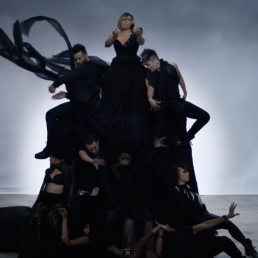Luxury Markets and Market Trends
Despite the global financial and economic crisis, the luxury market has performed well in the last few years, benefiting from a strong demand from emerging markets like India, China and Russia and the increased number of millionaires in the world, great lovers of luxury goods.
According to the 12th annual report from Capgemini and Merrill Lynch on global wealth, the number of people with more than one million dollars in assets was up 6%.
Emerging economies had rates of growth in the number of millionaires much higher than those of Western economies.
Lead by India with over 22% of new millionaires, followed by China with 20%, Brazil 19% …
Two thirds of the 10 million millionaires in the world reside in Europe or North America … The United States, Japan and Germany together harbor more than half of the total population of millionaires … China has gone ahead of France in 2007 with 414,900 millionaires (20%) against 394 400 in France (+1.3%)…
According to the report, the total wealth of millionaires is expected to reach 59,100 billion dollars by 2012, representing a growth rate of 7.7% per year. The difference would then be reduced between emerging countries and the West.
In 2007, the European Union (EU) is the leading French luxury market with a turnover of 9, 6 billion dollars.
For Colbert Committee members, who make 82% of their sales abroad, the European market represents 39% of the luxury world of sales. The United States totaled 20% and Japan 18%. Houses are present in the 27 EU countries with over 1,500 outlets. France remains the main market with 17% of sales worldwide, followed by the UK with 8%, Italy with 6% and Germany with 4%.
On the distribution of outlets in the EU, five countries are traditional luxury in mind: France with 20.3%, Italy with 15, 6%, Germany with 15.2%, Spain with 15%, the United Kingdom with 13.6%.
ITALY
The study of the Observatory Altagamma, a business club of Italian luxury, the luxury Italian known
2008, a fifth consecutive year of growth, but less strong than in the period 2005 to 2007.
Companies in the club specialized in fashion have seen their 2008 sales to grow by 5%, 3% of the jewelers, the design and furnishing of 11%. Luxury hotels, however, were down 5%.
According to the Secretary General of Altagamma: “2009 will be very difficult to manage. It will look at things on a daily basis … The market for luxury yachts is expected to grow steadily over the years, through the Middle East. The market for fashion accessories and jewelry is expected to grow between 2% and -2%. “
RUSSIA
Gum Gallery in Moscow
In an October 2008 report, the American consulting firm Bain and Company, specializing in studies of luxury, believes that Russia should remain an “island growth” for luxury goods companies, with a growth rate 20% annually over the next 5 years.
For Colbert, the Russian market is a strategic market which now accounts for 450 million euros, or 2.2% of their worldwide turnover. 302 outlets are present in Moscow, St Petersburg and Ekaterinburg. The GUM shopping mall has more than 150 Western brands
including Dior, Louis Vuitton, Guerlain, Chloé, Breguet watches, Hermes, John Lobb.
CHINA
“According to a Goldman Sachs cited by the ESC, China would have become, from 2005/2006 the third largest consumer of luxury goods, dépassant 12% of global sales (1% five years earlier).
China could overtake Japan fairly quickly (from 2015). This growth is due to the increase
the number of wealthy Chinese. According to Merrill Lynch, more than 300,000 Chinese will have incomes over $ 1 million. It is due to the growth of urban population in ability to acquire one or a few products of luxury.
INDIA
Chanel, Vuitton, Dior are the only houses avoirdes shops are being taught. Lacoste, Cartier, Lalique, ST Dupont are also present in New Delhi, Bombay and Calcutta.
After China in the 1990s, India has become the new chosen land of luxury. With the second highest growth rate in the world last year (9.2%), the country Offredi immense prospects. It has, for example 83,000 dollar millionaires, and triple that number every three years, according to the Federation of Indian Chambers of Commerce and Industry (FICCI). “The potential consumers of luxury goods are 8 million and the number is growing 25% per year … This market, which accounted for $ 2.2 billion in 2006, shows an annual growth of 20%.



























